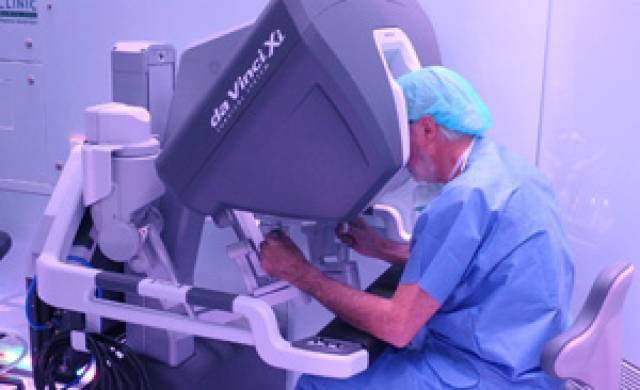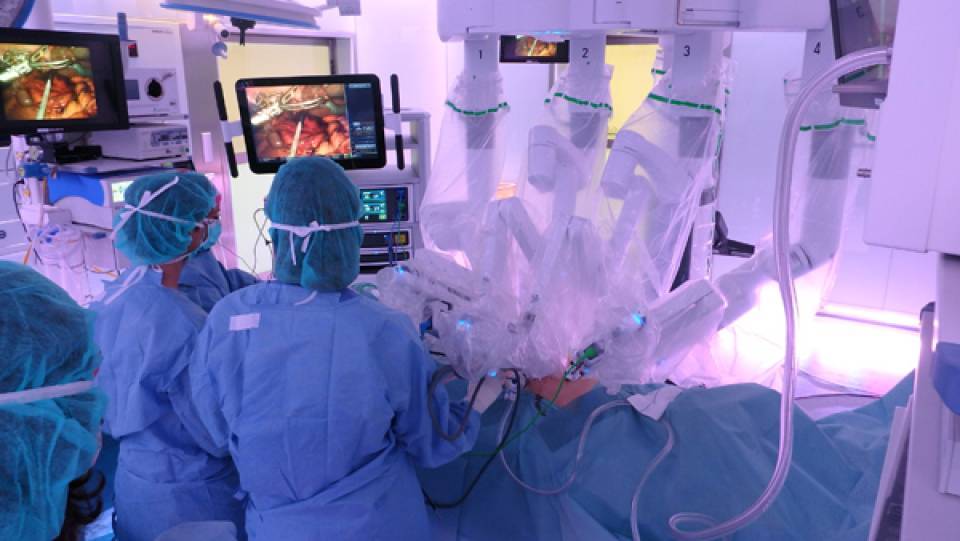
From now on, Dr. de Lacy, renowned worldwide for his experience in surgery by natural orifices, will advise Intuitive Surgical, manufacturer of the da Vinci robot, to expand this system throughout Europe. He will also help in the development of new applications and instruments for the surgical robot in the field of gastrointestinal surgery. “The future of surgery involves robotics without any doubt, and this is the reason why Hospital Clinic commits itself to this technology”, explained Dr. de Lacy.
A robot at the service of the surgeon
The new da Vinci surgical robot incorporates new features in its structure that open the door to perform many more gastrointestinal surgical procedures from a minimal invasive approach and with a greater precision than conventional laparoscopy. Its structure of suspended surgical arms, together with a mobile platform, allows the movement of the robot in angles otherwise not accessible with other robotic equipments. This functionality makes possible to set the surgical cart in any position surrounding the patient and permits the access to the four abdominal quadrants. This turns into a major maneuver capability which offers the surgeon an improved access to the surgical field.
Besides, this surgical robot is equipped with smaller and thinner arms and with new articulations which offer a wider movement capability. The greater length of the instruments permits a higher operative scope. Another remarkable feature of the new model is the fluorescence, which allows the surgeon to visualize in real time the vascularization of the organs. A vessel sealing system and a stapling device are also integrated in the surgical robot.

In fact, continues Dr. de Lacy “the new surgical robot opens the door to a large amount of surgical procedures that were not possible until now through a minimally invasive surgery and of difficult approach due to its complexity and risk”.
As Frank van Hyfte, Sales Director at Intuitive Surgical, points out, “the new system sums up the advantages of minimally invasive surgery, a minor aggression to the patient in comparison to open surgery, together with 3D vision and a greater maneuverability of the instruments, even higher than the achieved with the human hand”. To Xavier Carbonell, CEO in Palex, distributor of the surgical robot, “the main objective that Palex is working on is to provide to the healthcare professionals with the most technologically advanced equipment to contribute to get the better results for their patients”.
“The technology of the surgical robot da Vinci Xi allows us to provide our patients with the last generation in technology, specially to those who have to confront complex surgical procedures, as the same time that motivates our medical staff. Making accessible the most advanced technology to the most renowned and experienced surgeons, as the ones in Hospital Clínic, allows us to offer to our patients the best combination between capability and technology”, has assured Dr. Josep Maria Piqué, General Director of the Hospital Clínic.
The da Vinci Xi surgical robot was launched in Europe last June, and, although there are 9 units installed in other European hospitals, only 3 of them have recently begun to be used in gastrointestinal surgery.

